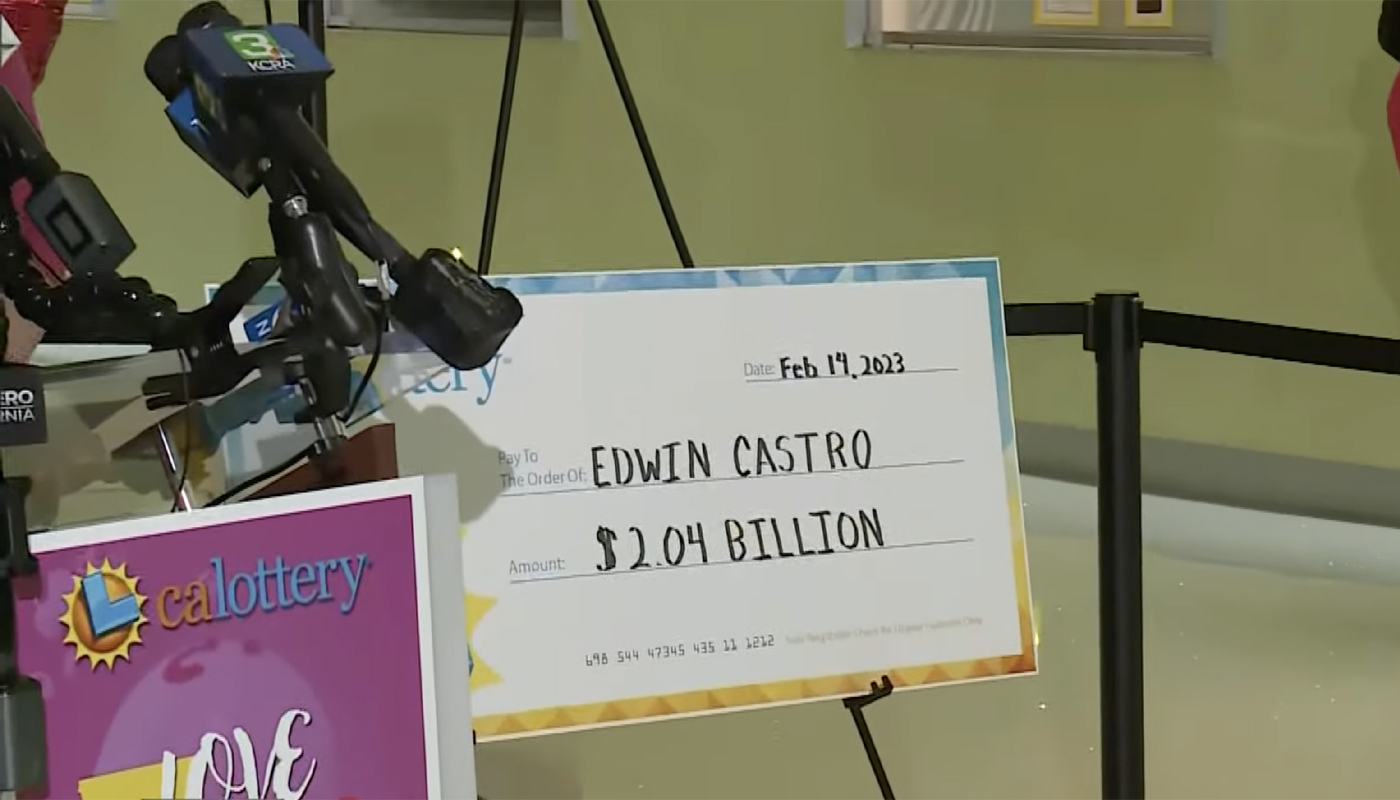
News writer
With Mega Millions and Powerball currently sporting estimated jackpots of $1.1 billion and $800 million, respectively, U.S. lottery players are beginning to get used to seeing both Mega Millions and Powerball jackpots reach the region of $1 billion.
But many players have questions about the two biggest lottery draws, such as which game has the best odds, why Powerball jackpots are usually bigger, and which game is played more frequently. Let's compare Powerball and Mega Millions and answer these questions and more.
When the games began
Powerball
Powerball lottery tickets went on sale for the first time on April 19, 1992. The game was a rebranding of the original Lotto America. The first drawing took place on April 22, 1992. At its launch, it became the first lottery game to use two drums to draw numbers. Tickets could initially be purchased in Delaware, Iowa, Idaho, Indiana, Kansas, Kentucky, Minnesota, Missouri, Montana, Oregon, Rhode Island, South Dakota, District of Columbia, Wisconsin, and West Virginia. Since its inception, Powerball has continued to attract more players every year.
Mega Millions
The first Mega Millions tickets went on sale on May 15, 2002. The game was a rebranding of the former Big Game. The first drawing took place on May 17, 2002. The original participating states included Georgia, Illinois, Maryland, Massachusetts, Michigan, New York, Ohio, and Virginia. There was a jackpot winner in the very first Mega Millions drawing. The winner was Samuel Rice and The Rice Partnership of Chatham, Illinois. The jackpot was $28 million, and the lucky numbers were 15, 18, 25, 33, and 47, and the Mega Ball was number 30.
Why do Powerball and Mega Millions jackpot prizes differ
Both games have recently seen huge rollover jackpot prizes – Mega Millions, $1.58 billion, and Powerball, a world record $2.04 billion. But Powerball jackpots are usually higher than Mega Millions top prizes, and you're probably wondering why. The answer is simpler than you may think.
- More draws: Mega Millions draws are held every Tuesday and Friday evening. Powerball draws are held every Monday, Wednesday, and Saturday evening.
- More players: Mega Millions tickets can be purchased in 45 states as well as in the District of Columbia and the U.S. Virgin Islands. Powerball tickets can be purchased in the same jurisdictions and also in Puerto Rico.
- Rule changes: In 2015, Powerball added ten more numbers to the main selection group, which increased from 59 to 69. In 2017, Mega Millions adjusted its main number selection from 75 to 70 and increased its Mega Ball selection from 15 to 25.
Both games are designed to pass through multiple drawings without a top prize winner, so the jackpot will roll over and reach a higher number. If the jackpot wins were more frequent, the top prizes would never reach the billions.
Another factor that boosts jackpot prizes is ticket sales. When the jackpot rolls over, and prizes begin to get really big, more people tend to buy more tickets. For example, a typical Powerball drawing accrues sales of around 6-12 million tickets. On August 4, 2023, when the jackpot reached $1.35 billion, more than 132 million Powerball tickets were sold.
The differences in play between Powerball and Mega Millions
Powerball
To play Powerball, you must select five numbers from 1 through 69 and a Powerball number from 1 through 26 or select Easy Pick/Quick Pick. Each $2 play allows you a single chance at winning the jackpot prize. There are also optional additional features to Powerball.
- Power Play: You can add Power Play to your $2 Powerball ticket for $1 extra. This feature can multiply a non-jackpot prize by 2, 3, 4, 5, or 10 times.
- Double Play: You can ass Double play to your $2 Powerball ticket for $1 extra. This feature allows players in designated jurisdictions to match their numbers in a separate drawing for a prize of $10 million. Double Play is available in the following jurisdictions:
- Colorado
- Florida
- Idaho
- Indiana
- Maryland
- Michigan
- Missouri
- Montana
- Nebraska
- New Jersey
- New Mexico
- Oklahoma
- Pennsylvania
- Puerto Rico
- South Carolina
- South Dakota
- Tennessee
- U.S. Virgin Islands
- Washington
- Power Play with Double Play: You can add both Power Play and Double Play to your $2 Powerball ticket for an extra $2.
Mega Millions
To play Mega Millions, you must select five numbers from 1 to 70 and one number from 1 to 25 (Mega Ball) or select Easy Pick/Quick Pick. There is also an optional additional feature that is available in all participating jurisdictions except California.
- Megaplier: The Megaplier costs an extra $1 per play. It can potentially increase your non-jackpot prize by 2, 3, 4, or 5 times. The Megaplier is drawn on Tuesday and Friday nights before the Mega Millions drawing.
- Just The Jackpot: This game is available in some jurisdictions where Mega Millions tickets are on sale. It costs $3 to play, and this gives participants two tickets and two chances of winning the Mega Millions jackpot but not any of the non-jackpot prizes. Just the Jackpot tickets are not valid towards any other prizes. Just the Jackpot has been available since 2017, as yet, there has been no winner. It is available in the following jurisdictions:
- Georgia
- Indiana
- Kansas
- Kentucky
- Massachusetts
- Nebraska
- New Jersey
- New Mexico
- New York
- Ohio
- South Dakota
- Texas
- Virginia
- Wisconsin
- Wyoming
How do secondary prizes compare between Powerball and Mega Millions?
Although the highest secondary prizes in both Powerball and Mega Millions are the same, with Megaplier, the Mega Millions Match-5 could grow to as much as $5 million, whereas the Powerball Match-5 with the addition of Power Play would be $2 million.
| Tier | Match | Powerball Prize | Mega Millions Prize |
|---|---|---|---|
| 1 | 5 + 1 | Jackpot | Jackpot |
| 2 | 5 | $1,000,000 | $1,000,000 |
| 3 | 4 + 1 | $50,000 | $10,000 |
| 4 | 4 | $100 | $500 |
| 5 | 3 +1 | $100 | $200 |
| 6 | 3 | $7 | $10 |
| 7 | 2 + 1 | $7 | $10 |
| 8 | 1 + 1 | $4 | $4 |
| 9 | 0 + 1 | $4 | $2 |
Your odds of winning the Powerball jackpot are 1 in 292,201,338. Your odds of winning the Mega Millions jackpot are 1 in 302,575,350. The reason for the slight difference is that the games have different number matrices.
Who benefits from Powerball revenue?
Powerball tickets cost a minimum of $2 per play. Here's a breakdown of what happens to that revenue:
- 50% of revenue from ticket sales goes to funding all Powerball prizes.
- 35% of revenue goes to funding state-designated causes.
- 9% of revenue goes to the operating expenses of the Powerball lottery organization.
- 6% of revenue goes to retailer commissions.
Who benefits from Mega Millions revenue?
Mega Millions tickets cost a minimum of $2 per play.
- 65% of revenue from ticket sales goes to funding all Mega Millions prizes.
- 24% of revenue goes to funding state-designated causes.
- 5% of revenue goes to the operating expenses of the Mega Millions lottery organization.
- 6% of revenue goes to retailer commissions.
Mega Millions fun facts and figures
- Since Mega Millions was launched in 2002, to date, there have been 214 jackpots won. 241 of them were on individual winning tickets, and 22 jackpots were shared by two or more winning tickets.
- There are six stars in the Mega Millions logo. These represent the original six jurisdictions that started the game.
- More than 31 Mega Millions jackpots have been prizes above $300 million.
- Mega Millions is the only lottery game in the world that has awarded five prizes of more than $1 billion - one in 2018, 2021, and 2022, and two in 2023.
- A Mega Millions jackpot record was made on August 8, 2023, when a Florida player won a $1.602 billion prize.
- Players in Georgia, New Jersey, and Texas must decide whether to take the jackpot as an annuity or a lump sum when they purchase their tickets. Players in other jurisdictions get to make the decision after they win.
- To date, 28 jurisdictions have had Mega Millions jackpot winners. These are Arizona, Arkansas, California, Florida, Georgia, Idaho, Illinois, Indiana, Kansas, Maine, Maryland, Massachusetts, Michigan, Minnesota, Missouri, New Hampshire, New Jersey, New York, North Carolina, Ohio, Pennsylvania, Rhode Island, South Carolina, Tennessee, Texas, Virginia, Washington, and Wisconsin.
Powerball fun facts and figures
- When Powerball launched back in 1992, it became the first lottery to use two drums. The five balls were drawn from 45 white balls in the first drum. The Powerball was drawn from 45 red balls in the second drum. Back then, the odds of winning the jackpot were 1 in 54,979,154.
- The largest ever Powerball jackpot was $2.04 billion. It was won in California on November 7, 2022.
- Indiana has been participating in the Powerball lottery since 1992. To date, the state has had more Powerball jackpot winners than any other state, with a total of 39.
- The most commonly drawn Powerball numbers are 21, 27, 36, 39, and 61.
In 2013, the Texas lottery celebrated its 21st anniversary with the Lone Star state's first Powerball jackpot winner. The winner, Paul McDowell from Ravenna, won $40 million. The winning numbers were 9, 14, 17, 49, 57, and Powerball number 2.




















Comments